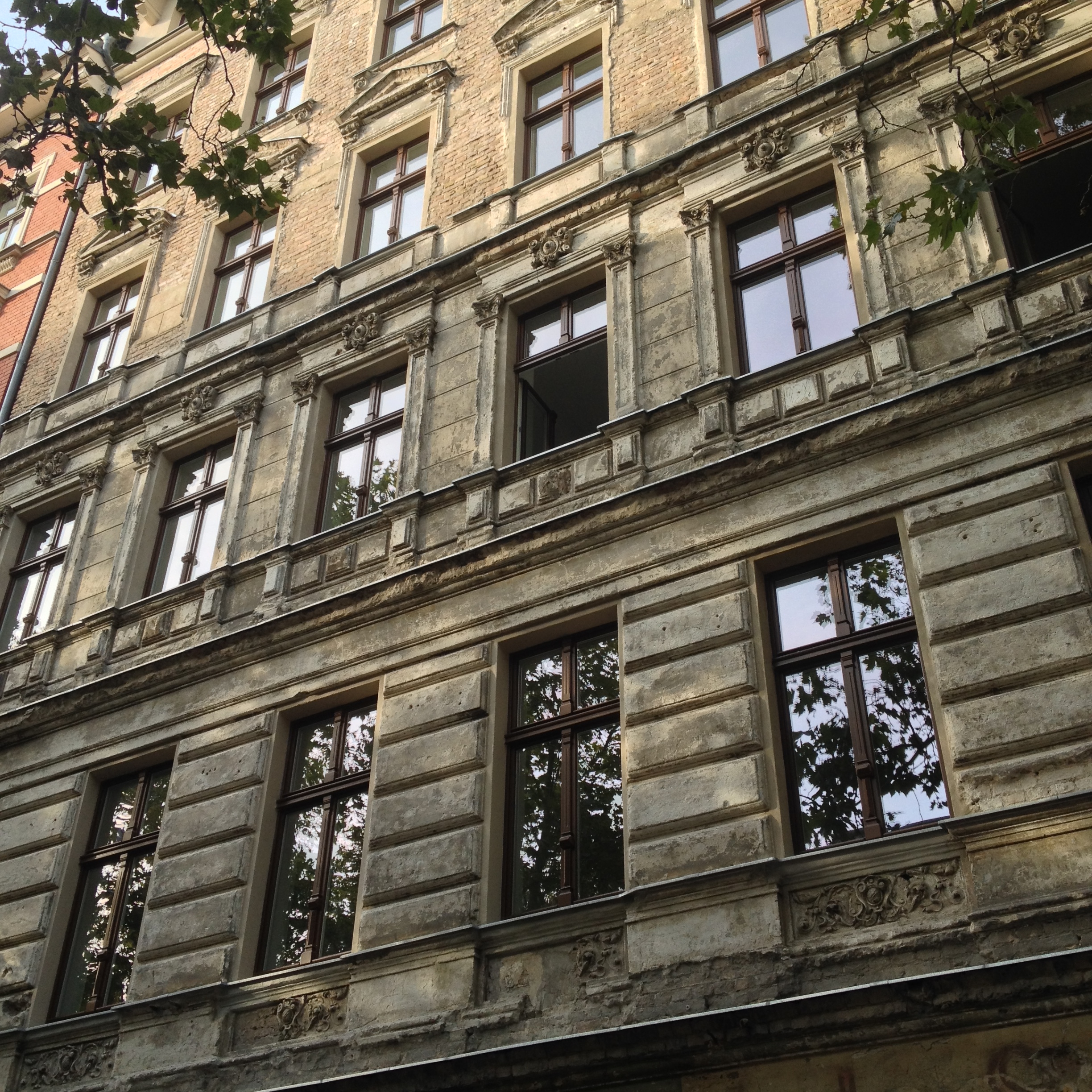It was the last unrenovated building in Prenzlauer Berg, and all who came to inspect its weathering tiers fell (inwardly) to their knees in veneration. When she lay on her bed she could feel everything she’d used to look so ardently forward to fall behind her like old-growth redwoods thundering to the forest floor as the tree-huggers were escorted out of the woods in handcuffs on the back of a logging truck, supine like the lumber. Who in that primordial darkness would have feared the gentle two-by-four? Looking at all the smoothly serene façades to either side of the last unrenovated building in Prenzlauer Berg, she wanted to understand the ruinousness of renovation, she wanted to interpellate the romance of ruins, study it, take apart its ethics and its aesthetics and put it back together again with one segment of the egg-and-dart cornice upside down. She wanted the caryatids to crumple over. She wanted people to be decently housed, but she also wanted to cause irreparable damage to narratives of progress washing over the city with their pale blue saline reminiscence of forgetfulness. She wanted to hug the last unrenovated building in Prenzlauer Berg until she was led away by handcuffs. She wanted to hug everything she did not want to disappear that would disappear, until she was led away by handcuffs. She lay on her bed, staring, no longer astonished, into the ruins of nostalgia.
Dieser Text ist Teil des Zyklus „The Ruins of Nostalgia“.
Dieser Text steht unter der Lizenz CC BY-NC-ND 3.0 Germany. Das Urheberrecht liegt bei der Autorin.
Weitergehen
inspect
But earlier this week, after unlocking my bike on my way to work, I gave the thing an inspection and saw that it has become diseased.
forest
…the present-day area of Berlin consisted of mixed coniferous forests, marshlands, and far-flung little farming villages.
Prenzlauer Berg
darkness
Ich fuhr wie immer kreuz und quer durch Berlin und meckerte, wenn ich nach Einbruch der Dunkelheit über die Dächer Friedenaus in Wilmersdorfer Fernen schaute: „Ich will zurück in die Stadt.“
tree
Die Sonne blitzt durch die Äste der Bäume, deren Namen ich nicht kenne (Wildbirne, Vogelkirsche und Traubeneiche).
façade
Im Februar 2019 brachte die Hellersdorfer Wohnungsgenossenschaft Grüne Mitte das Gedicht avenidas von Eugen Gomringer an der Fassade eines ihrer Gebäude in der Kyritzer Straße an.
aesthetic
It is somewhat ironic that the legacy of the self-declared socialist regime in the East today contributes to such unmediated segregation, at least in aesthetic terms, right in the new center of the city.
forgetfulness
Auch wenn mir der Fuchs in der Stadt hin und wieder begegnete, schienen diese Augenblicke schneller in Vergessenheit zu geraten.
nostalgia
The result makes for a very readable excess of nostalgia, as well as a meditation on the passage of time and its tangible manifestations.
Dem die Nachbarn übel gerathen sind, der muss sich selbst loben.
Wander, Deutsches Sprichwörter-Lexikon, 1873
Über das Projekt
Die Anthologie NACHBARSCHAFTEN, herausgegeben von Christina Ernst und Hanna Hamel, ist eine Publikation des Interdisziplinären Forschungsverbunds (IFV) „Stadt, Land, Kiez. Nachbarschaften in der Berliner Gegenwartsliteratur“ am Leibniz-Zentrum für Literatur- und Kulturforschung in Berlin. Seit 2019 erforscht das Projekt das Phänomen der Nachbarschaft in der Gegenwartsliteratur und bezieht dazu Überlegungen aus unterschiedlichen wissenschaftlichen Disziplinen mit ein. In der im November 2020 online gestellten Anthologie können Leser*innen durch aktuelle Positionen und Perspektiven aus Literatur und Theorie flanieren, ihre Berührungspunkte und Weggabelungen erkunden und sich in den Nachbarschaften Berlins zwischen den Texten bewegen.
Gefördert durch




